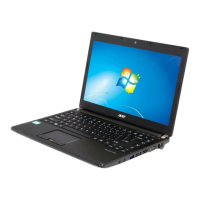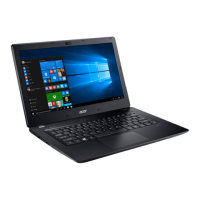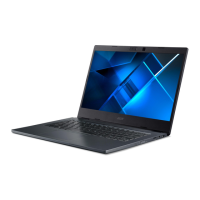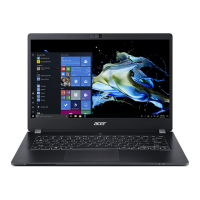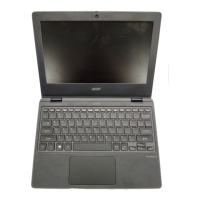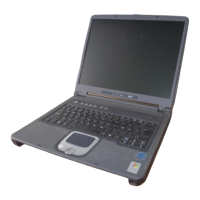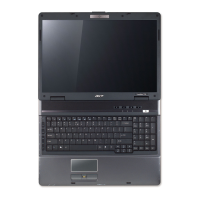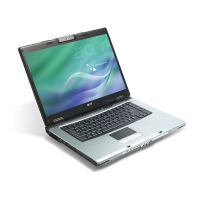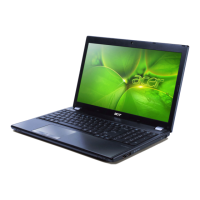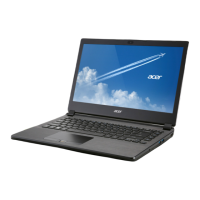
Do you have a question about the Acer TravelMate P Series and is the answer not in the manual?
| Series | TravelMate P Series |
|---|---|
| Category | Laptop |
| Processor | Up to Intel Core i7 |
| Operating System | Windows 10/11 Pro |
| Memory | Up to 32 GB DDR4 SDRAM |
| Storage | Up to 1 TB SSD |
| Display | 14" or 15.6" |
| Graphics | Intel UHD Graphics |
| Ports | USB, HDMI, Ethernet |
| Wireless | Wi-Fi 6, Bluetooth 5.0 (varies by model) |
Process to create an Acer ID for accessing services and registering products.
Accessing and managing your registered Acer products via the online account.
Introduction to the available setup and user manuals for your notebook.
Essential guidelines for maintaining your computer's physical condition and performance.
Identification of key components like screen, webcam, microphones, keyboard, and touchpad.
Location and description of ports on the left, right, and rear of the notebook.
Identification of components on the bottom of the notebook, including vents and speakers.
Explanation of lock keys, the numeric keypad, and Windows-specific keys.
Using function keys with Fn for system controls like brightness, volume, and sleep mode.
Fundamental touchpad operations and multi-finger gestures for navigation and control.
Steps to create system recovery and driver/application backups for data safety.
Methods for restoring the system from a snapshot or to factory condition.
Procedure for reinstalling pre-installed software and device drivers.
Instructions for changing between Windows 7 and Windows 8.1 operating systems.
Guide to accessing and modifying BIOS settings, including boot mode selection.
Establishing internet connections using Ethernet cables or wireless LAN (Wi-Fi).
Steps to activate Bluetooth and pair it with other devices for wireless communication.
Overview of Acer ProShield security features and the guided setup process.
Using secure drives, encryption, and managing passwords/fingerprints.
Configuring boot order and setting system access passwords within the BIOS utility.
Using a physical security lock and implementing passwords for system access and BIOS.
Adjusting settings to reduce power consumption and maximize battery performance.
Understanding battery features, charging procedures, and initial conditioning.
Strategies to maximize battery operational time and check its current level.
Steps for safely disconnecting, packing, and moving the computer for travel.
Advice on items to bring, environmental protection, and specific needs for international trips.
Procedures for using the memory card reader, including card insertion and safe removal.
Connecting external displays, audio devices, and peripherals via VGA, HDMI, and USB ports.
Addressing frequent problems like power, display, audio, and keyboard issues with solutions.
Procedures for system restore, recovery, and how to request technical service.
Navigational tips and guidance for using the Windows 8.1 operating system effectively.
Identifying common error messages and their corresponding corrective actions for resolution.
Choosing an ISP and understanding different connection types like DSL, Cable, and 3G.
Setting up wired and wireless networks for internet access and resource sharing.
Advice on safe browsing, using security software, and protecting personal information online.
Importance of keeping software updated and choosing strong, unique passwords for online accounts.
